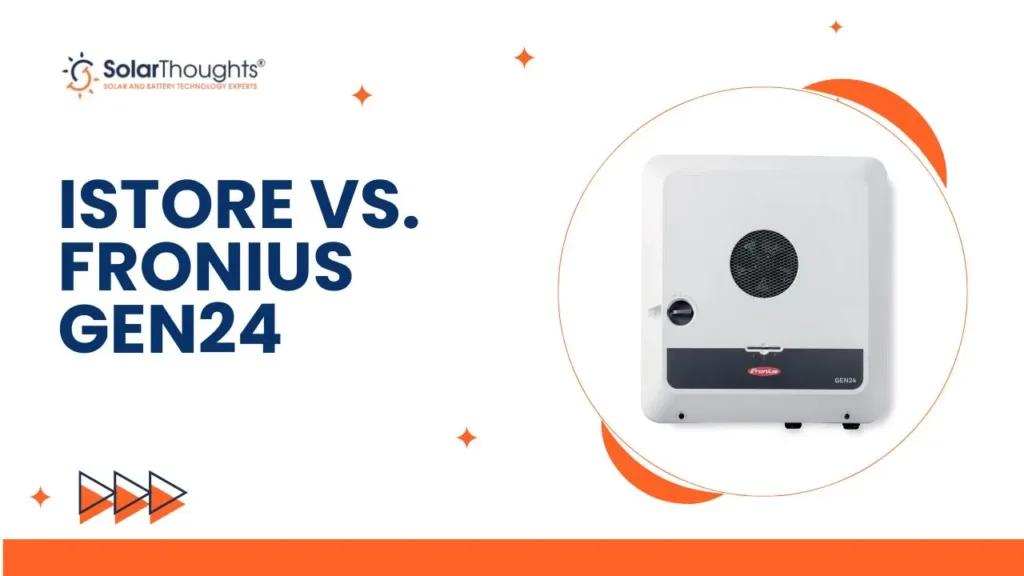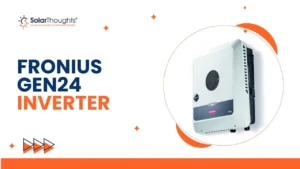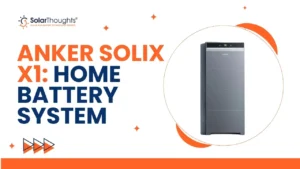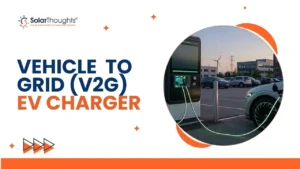Deciding on a solar inverter for your home in Brisbane, Gold Coast, or Sunshine Coast is a big choice. Two popular options are the 10 kW models from iStore and Fronius (GEN24). The iStore is a re-branded Huawei inverter built for the Australian market. This detailed comparison from SolarThoughts® breaks down how these inverters perform. We look at everything from their design and cooling to safety features and how they handle batteries. This guide helps you understand which inverter might be best for your solar setup.
Table of Contents
ToggleUnderstanding the iStore Inverter: A Huawei Connection
Many people know Huawei as a big global tech company. The iStore inverter is essentially a Huawei inverter adapted for Australia. For years, Huawei has partnered with local companies to import and rename its inverters for different markets. iStore is the Australian company that handles this for the Australian market.
iStore is a stable Australian business with deep roots in the solar industry. They also sell heat pumps and have a strong solar division. This partnership means Australian customers get local service and support. This helps address earlier concerns people had about Huawei products. The fact that an Australian company handles the software and service makes many customers feel more at ease.
Inverter Design: Size, Heatsinks, and Cooling Fans
When you compare the Fronius and iStore inverters side-by-side, the Fronius often looks much larger. However, a lot of that size comes from how it manages cables. The Fronius design allows for clean cable routing from the back or bottom, making it appear bigger. If you remove the front cover, their core sizes are surprisingly similar.
A key difference is how each inverter handles heat. The iStore inverter uses its entire outer casing as a heatsink. This means both the front and back of the box help dissipate heat. The Fronius, on the other hand, mainly uses its front plate as a heatsink. The back of the Fronius unit is plastic.
Cooling fans also differ between the two. The Fronius has a large fan on the front and two internal computer-style fans. The iStore has one external fan. This fan is fairly big, but not as large or as complex as the Fronius system. A unique feature of the iStore’s external fan is its ability to reverse direction.
This helps clear out small pests like geckos, which can sometimes get stuck in fan mechanisms. Geckos are no longer an issue for newer Fronius models. Inside, the Fronius uses two significant internal fans, while the iStore uses one. The iStore’s internal fan focuses on circulating air to prevent hot spots. The Fronius fan system is generally quiet, especially compared to its older models. However, the iStore’s fan is even quieter; you would barely notice it is running
Monitoring and Cybersecurity Peace of Mind
Cybersecurity is a big concern for many people, especially with global tech companies. Past concerns linked to Huawei inverters sometimes made people nervous about having them in their homes. These concerns often centred on who controls the data and whether a foreign entity could interfere with the inverter’s operation.
The iStore partnership addresses these worries. iStore uses a different monitoring platform called Universe. This platform is based in Singapore, not China. This means Huawei does not have direct control over the inverter’s monitoring or operation once it’s installed. This separation gives users greater peace of mind.
While some older theories suggested Chinese inverter manufacturers could remotely control or even “brick” inverters, there has been no proof of such actions. However, for those concerned about data security and foreign influence, the iStore’s setup with Singapore-based monitoring removes those specific fears. This makes iStore a good choice if cybersecurity is a top priority for your solar system.
Inverter Performance: Shading and Power Tracking
Solar panels work best when they get full sunlight. But sometimes, trees, chimneys, or other parts of your roof can cast shadows. This is where MPPTs (Maximum Power Point Trackers) become important. Think of an MPPT as an “engine” or “gearbox” for your solar panels. It helps each group of panels (called an array) work at its best voltage and current. This ensures you get the most power possible, even if some panels are shaded or face different directions (like north, east, or west).
The iStore inverter has three MPPTs, while the Fronius inverter usually has two on its smaller models. To test this, inverters were set up side-by-side. Each inverter is connected to three different solar arrays: one facing North, one East, and one West. A special data logger recorded their performance over time.
Shading Performance Test
The test specifically looked at how well each inverter handled shading. For example, if the western panels were shaded, but the eastern panels were not, an inverter with more MPPTs might perform better.
In earlier tests with a different brand, Fronius, despite having fewer MPPTs, often outperformed due to its advanced internal algorithms. However, in this direct comparison, the iStore inverter showed a slight edge when dealing with tricky shading conditions. Its three MPPTs allowed it to better optimise power from panels facing different directions or experiencing uneven shade. While Fronius still has excellent algorithms for power tracking, iStore’s design with three MPPTs gave it a marginal win in this shading test. This shows the iStore is a strong contender, especially if your roof has complex shading patterns.
Heat Management and Inverter Lifespan
Heat is a major factor in how long electronic components last. This is especially true for solar inverters, which often work hard in hot conditions. To understand how the inverters handle heat, special thermal testing took place.
Thermal Testing Results
Technicians placed a thermocouple inside the capacitors of both inverters. They ran both units at about 7 kW in an air-conditioned room. The results were clear: the iStore inverter ran up to 20 °C hotter internally than the Fronius inverter.
Why Internal Temperature Matters
The internal temperature of an inverter directly impacts the lifespan of its components. Here’s a quick look at key parts:
- Capacitors: These act like voltage “reservoirs” or “tanks.” They store and release electrical energy to keep the voltage stable. Capacitors contain an electrolyte gel. As they get hot, this gel breaks down.
- IGBTs (Insulated Gate Bipolar Transistors): These are like fast switches. They convert the DC power from your solar panels into AC power for your home. They switch many thousands of times per second and generate a lot of heat.
- MOSFETs (Metal-Oxide-Semiconductor Field-Effect Transistors): The iStore uses MOSFETs instead of IGBTs. MOSFETs are newer technology and can switch much faster (around 100,000 times per second). Theoretically, this faster switching could create less heat. However, running an inverter hot for long periods can significantly reduce the life of these critical parts. While Huawei engineers are experts in design and testing, their compact iStore design, which runs hotter, raises some concerns about long-term durability, especially in very hot climates or installations.
Derating Under High Heat
When an inverter gets too hot, it has a built-in protection mechanism called derating. This means it reduces its power output to cool down and prevent damage. The iStore inverter began derating when its internal temperature reached around 75 °C. It would lower its output from 10 kW to 9 kW for a while, then go back up, in a “zippy” fashion. The Fronius inverter, running cooler, did not show significant derating under similar test conditions.
The takeaway here is that while the iStore is well-engineered, its compact design and higher internal temperatures mean it might not be the best choice for:
- Extremely hot climates (which can include parts of Brisbane/Gold Coast in summer).
- Installations on north-facing walls.
- Garages or other hot, enclosed spaces.
- Systems that are heavily oversized with solar panels (e.g., 20-25 kW of panels on a 10 kW inverter).
For demanding conditions, the Fronius, with its more conservative design and better heat management, might be a more reliable option for longevity. While the iStore can technically handle up to ~25 kW of solar input on a 10 kW inverter, pushing it that hard, especially with a battery system running 24/7, could shorten its life. A more balanced approach, like 15 kW of solar on a 10 kW inverter, is often recommended.
Safety First: Arc Fault Circuit Interruption (AFCI)
Safety is a critical feature in any electrical system. Solar installations can sometimes develop arc faults, which are dangerous electrical sparks caused by damaged wires, loose connections, or other issues. These arcs can create high heat and potentially lead to fires. This is where AFCI (Arc Fault Circuit Interruption) comes in. AFCI technology detects these dangerous electrical arcs and quickly shuts down the system to prevent hazards.
AFCI Demonstration and Results
The test involved purposely creating an arc‐fault with a cable connected to a Fronius inverter. By default, the Fronius inverter did not have its AFCI feature turned on. When the arc was created, it sparked and produced significant smoke, clearly showing the danger of an uncontrolled arc fault. The inverter continued to run at 7 amps, indicating it did not detect or shut down the fault. The Fronius company has stated that they plan to enable AFCI by default in future models. They have been working to fine-tune the technology to prevent “nuisance tripping.”
The iStore inverter, however, performed much better in AFCI tests. In previous comparisons, the iStore’s AFCI technology consistently outperformed others. When an arc was created with the iStore, it immediately detected even the tiniest spark and shut down the system. This proactive safety feature is a significant advantage for the iStore, providing a higher level of protection against potential fire hazards.
Battery Compatibility and Design
Both the iStore and Fronius are hybrid inverters, meaning they can work with batteries to store excess solar energy. This allows homeowners to use solar power even when the sun isn’t shining. The iStore inverter is compatible with its own brand of iStore batteries. These batteries feature a double DC-to-DC converter and optimisers. This design allows the iStore batteries to run at a lower voltage, and then the optimisers boost the voltage to what the inverter needs. This offers more flexibility in sourcing battery cells from various manufacturers. However, this added component, while offering flexibility, may slightly reduce efficiency and potentially introduce another point of failure. The head of Huawei’s battery division likely designed this system for several reasons:
- Safety: Potentially a safer way to manage battery power.
- Warranty: May simplify warranty issues by allowing the replacement of individual modules rather than the entire battery.
- Marketing: Could be seen as an advanced feature.
- Component Sourcing: Gives flexibility to use cells from different suppliers, unlike some manufacturers that make their own cells.
While this technology is newer and some might question its complexity compared to simpler, more reliable designs, Huawei’s rigorous testing processes suggest it is a robust solution. Real-world efficiency of the double DC-to-DC converter design (such as in the iStore battery system) will be important to test. Some believe it might be less efficient than a more integrated battery design (such as purely one-converter systems), but only long-term data will confirm this.
Final Thoughts: Choosing Your Solar Inverter
Both the iStore and Fronius 10 kW inverters are strong choices for residential solar power systems (particularly in the Brisbane, Gold Coast, and Sunshine Coast regions serviced by SolarThoughts®), each with unique strengths. The iStore inverter (Huawei) stands out for its advanced AFCI safety features, performing quickly and reliably to prevent arc faults. Its three MPPTs also give it a slight edge in managing complex shading conditions.
The partnership with an Australian company for service and the Singapore-based monitoring helps ease cybersecurity concerns. However, its compact design means it runs hotter internally, which could impact component lifespan, especially in very hot climates or when heavily oversizing the solar array.
The Fronius GEN24 inverter is known for its robust build and excellent heat management. It consistently runs cooler internally, suggesting a longer lifespan for its components. While its AFCI feature is not yet enabled by default, it remains a highly reliable inverter. If you prioritise cutting-edge safety features, better performance in shaded conditions, and local Australian support with secure monitoring, the iStore offers compelling advantages.
If long-term component durability, especially in demanding heat conditions, and a proven conservative design are your main concerns, the Fronius remains a top contender. Your final choice should consider your specific roof layout, local climate (Brisbane, Gold Coast, Sunshine Coast), and your personal priorities for safety and longevity.
Looking to go solar on the Gold Coast, Sunshine Coast, or Brisbane? Contact SolarThoughts® for expert advice and installation. We design systems for your local conditions, support hybrid battery options, ensure wiring & safety compliance, and tailor the inverter choice to your home.






